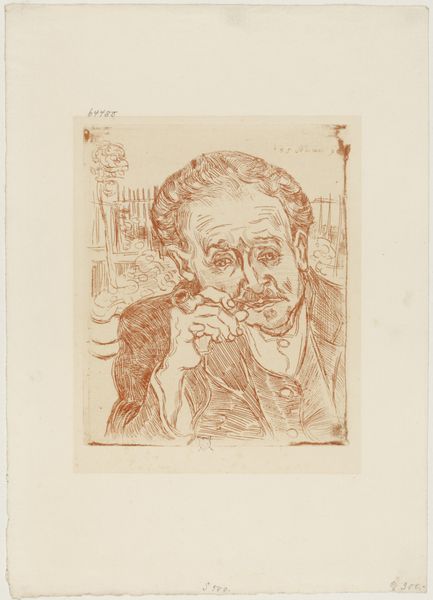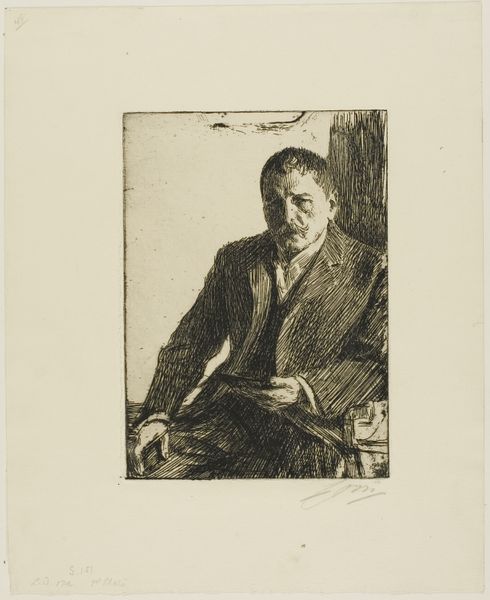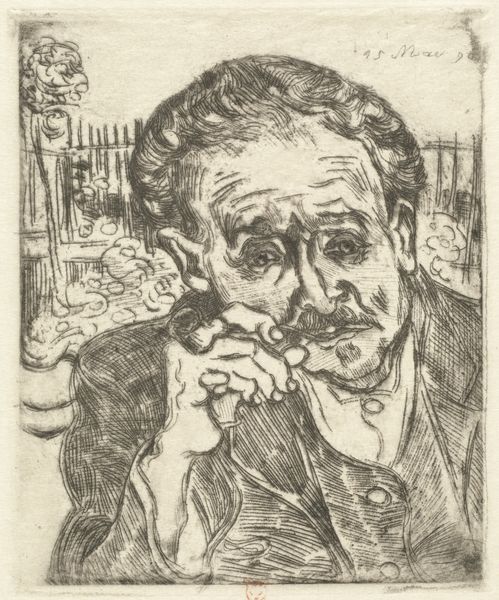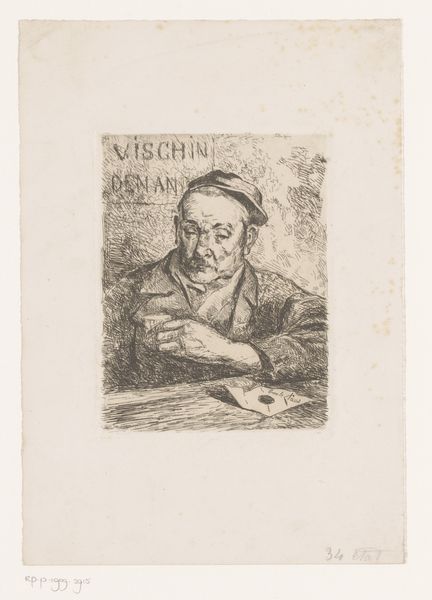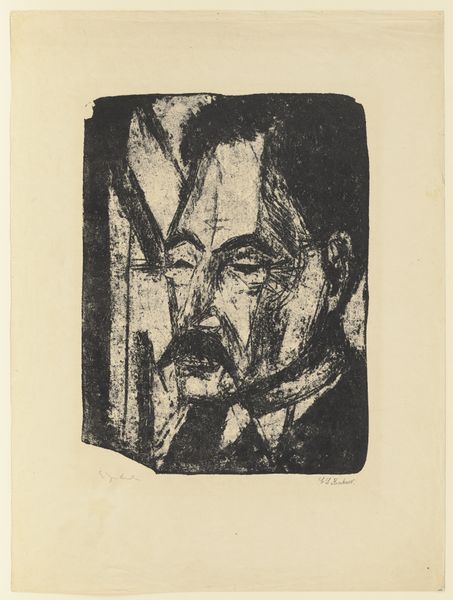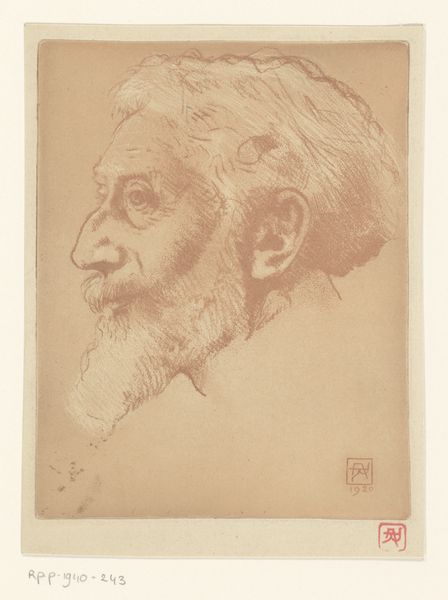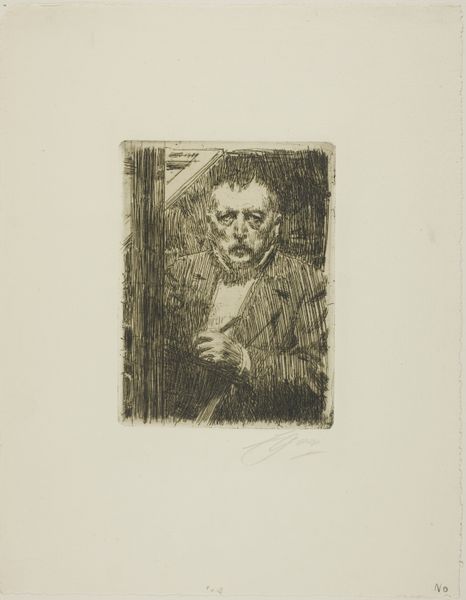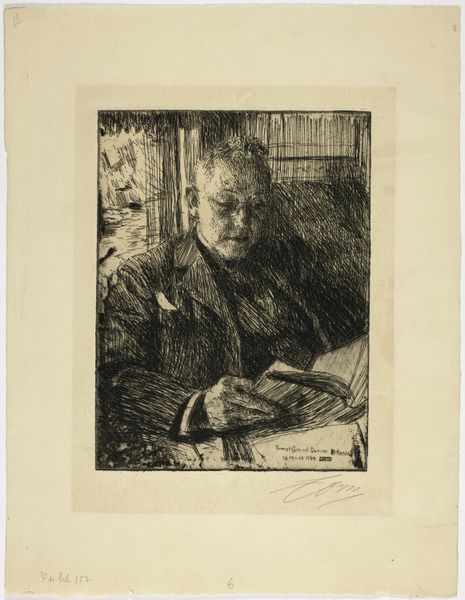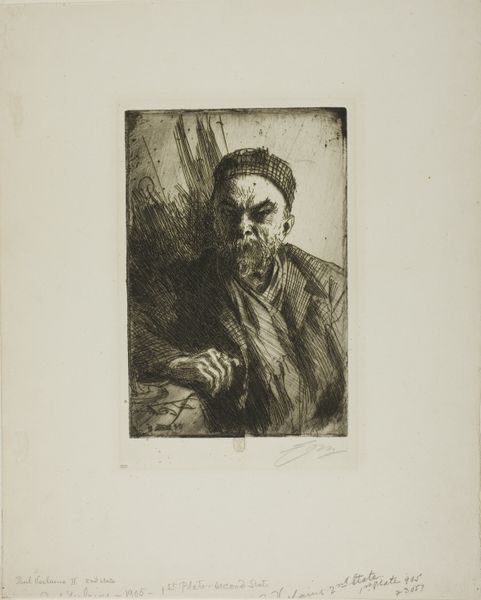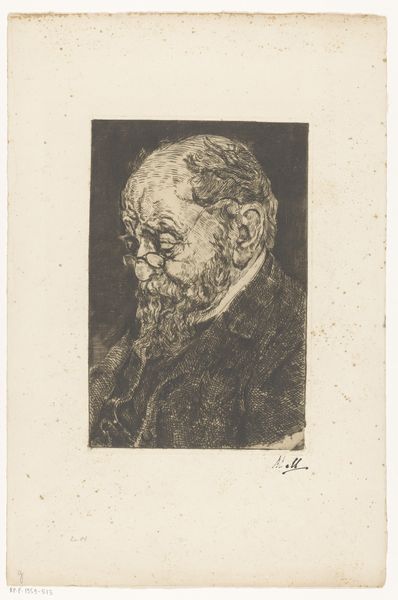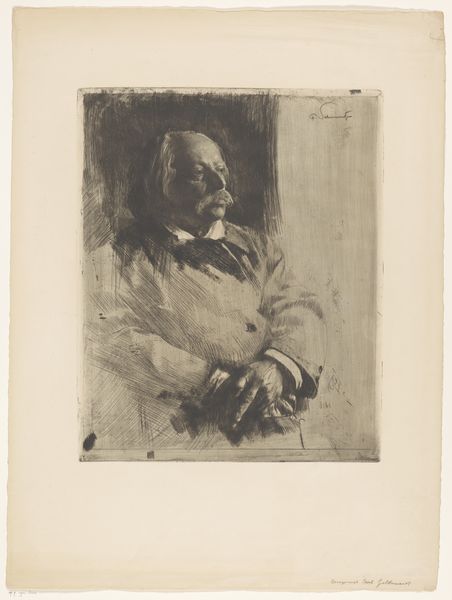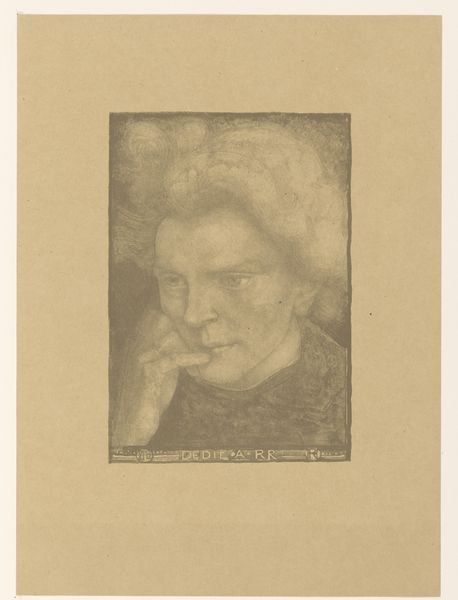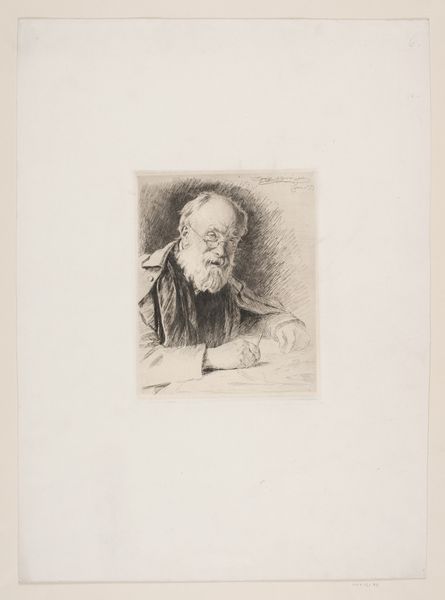
drawing, print, etching
#
portrait
#
drawing
# print
#
impressionism
#
etching
#
post-impressionism
Dimensions: Sheet (folded): 12 13/16 × 9 13/16 in. (32.5 × 25 cm)
Copyright: Public Domain
Curator: Looking at this, I immediately sense such melancholy. There’s a heaviness in his eyes, a weariness that the stark etching only seems to amplify. Editor: Indeed. We're observing Van Gogh’s "Portrait of Doctor Gachet," circa 1890. What you're seeing is not painting this time, but etching – an intimate glimpse, produced shortly before the artist's death, capturing the doctor who cared for Van Gogh in his final months. Curator: Right, that intimacy… It’s unsettling, isn't it? The vulnerability feels so exposed in this medium. Almost like a raw nerve. Did Van Gogh make many prints? This feels like a detour. Editor: Precisely. Prints, particularly etchings like this, allowed Van Gogh to explore the process of art making more as craft, where he manipulated metal plates, acid baths, and the physical pressing of the image. This contrasts sharply with the direct, visceral application of paint in his more recognized canvases, it highlights labor in art making. Curator: I see. So, what speaks to you materially about it? The way he builds up tone through those tiny lines? They're almost frantic, reflecting the state of his mind perhaps? Editor: The etching allowed him to dissect the emotional complexities through a laborious, almost painstaking, mark-making. We should consider this through a Marxist lens - his art and suffering were tied to how labor could either soothe or unravel. Curator: It’s haunting to imagine him hunched over the plate, meticulously scratching in the doctor’s likeness as his own demons circled. It does speak of production of course - mental labor, physical labor, what’s valued? Editor: And the implications. Van Gogh here explores labor with intention in his making as social commentary that connects with and goes beyond the personal domain to reach for something deeper. Curator: Yes… and I think this also reveals so much about artistic integrity – he transformed even the labor-intensive process into pure art, making the viewer reflect on it with fresh eyes. Editor: Agreed, it transforms how we see value and material constraints – as generative of content in the hand of such talent.
Comments
No comments
Be the first to comment and join the conversation on the ultimate creative platform.
